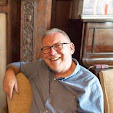 |
| (c) 2020 Tony Gillam |
I had planned to run a couple of improvisational
Music for Wellbeing Workshops in collaboration with mental health charity MIND
but, unfortunately, these had to be cancelled as, obviously, such social
gatherings are prohibited at the moment. Similarly, last month I was supposed
to be giving a talk at the Literary Conference in Hastings. The topic was to be
Mental Health and Wellbeing in the Books of Malcolm Saville. (Malcolm
Saville - for those who don't know - was a children's author whose books I
enjoyed very much when I was young and I've been a member of the Malcolm Saville
Society since 1999.) So I'd been looking forward to meeting with fellow members
and speaking at the Society's Literary Conference but this too was cancelled.
Re-imagining a talk is fairly simple - it can easily be converted into an article. And so I've been working on an article - or it may even end
up as a couple of linked articles - for a forthcoming issue of the Malcolm Saville
Society's magazine. But re-imagining an improvisational music workshop under
lock-down conditions is not so easy...
Fortunately, an opportunity arose in the form of an
invitation from a dulcimer-playing friend of mine, Steve O'Ryan. I met Steve last
October at a gathering of the Nonsuch Dulcimer Club (of which we're both members.)
As spring arrived, Steve hit upon the wonderful idea of creating a blog and a linked
Facebook group which would feature a new song for every day of the month of
May, a kind of virtual musical calendar. As Steve explains, "CMLE Play
(Songs for May) is releasing a different May song every day during May 2020.
Trad. songs, new songs, instrumentals - mainly played and sung by keen amateur
musicians." (In case you're wondering, the name CMLE Play, by the way, is
a pun on Pink Floyd's song 'See Emily Play'.)
I was delighted that Steve asked me to contribute a track to
this project and, not having any traditional
May songs in my repertoire, I hastily recorded a semi-improvised, one-take instrumental
on the dulcimer and called my new composition 'May Be, May Be Not'. I seem to
have got away with this, as the track was the featured tune on 5 May on Steve's
blog and Facebook group. So I'd managed, despite the lock-down, to improvise
some music and to turn this solo performance into a group experience, by sharing
it on Facebook and Soundcloud.
 |
| (c) 2020 Tony Gillam |
All of which goes to illustrate a few important points about
creativity and how it can promote wellbeing:
1.
Connection
Connecting
is one of the New Economics Foundation's recommended five actions to promote day-to-day wellbeing (Aked et al.,
2008). Connecting with others is very conducive
to wellbeing so, notwithstanding Groucho Marx's famous quip, it helps to
belong to a few groups, clubs or societies (this could be something like a Facebook group, or even something less obvious
like a literary society or a dulcimer club!) Belonging
to a larger organisation also promotes a sense of meaning - one of Seligman's
five elements of wellbeing - since, as
Seligman argued, meaning is derived from
belonging to and serving something that
you believe is bigger than the self (Seligman, 2011).
2. Flexibility
Along with
risk-taking and humour, I have suggested that flexibility is one of the characteristics of a creative practitioner
(Gillam, 2018). Flexibility involves a
willingness to try new approaches -
so a planned talk can become an article and a planned group improvisation can become a solo improvisation,
shared with a wider group through social media.
3.
Collaboration
Even if
writing articles and composing music in lock-down might seem the most solitary
of activities, in fact collaboration
with others is still central to these creative enterprises. I would not have been prompted to write my
article if the conference organiser (David Shields) had not originally invited me to give my talk. If David had not subsequently
- and quite rightly - decided to
cancel the event, the talk might still have existed but the article might not. So any resulting articles on this subject are really a collaboration between David, me and the magazine editor. Similarly, if Steve had not invited me to contribute a piece
of music to his May songs project, I might not have got round to improvising/composing/recording and sharing 'May
Be, May Be Not', or of hearing the wonderful
contributions of my fellow musicians. The resulting feedback - and friendly banter - I've had with my musical
friends has made me laugh a lot and has felt a bit like a surrogate night out at the pub with old friends.
These kinds of connections and collaborations are invaluable
as we all try to remain creative in difficult times.
References
Aked, J., Marks, N., Cordon, C. & Thompson, S. (2008). Five
ways to wellbeing: The evidence. London: New Economics Foundation.
Gillam, T. (2018) Creativity, Wellbeing and Mental Health
Practice, Basingstoke: Palgrave Macmillan.
Seligman, M.E.P. (2011). Flourish: A new understanding of
happiness and well-being – and how to achieve them. London: Nicholas
Brealey Publishing.



